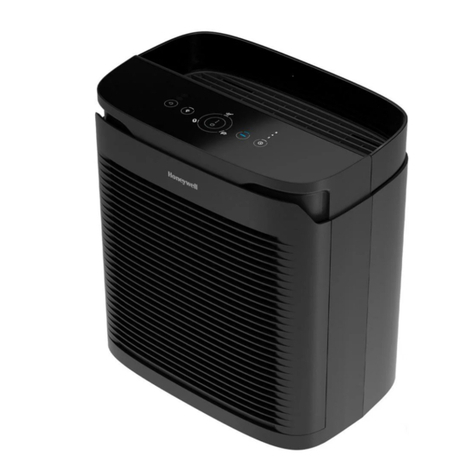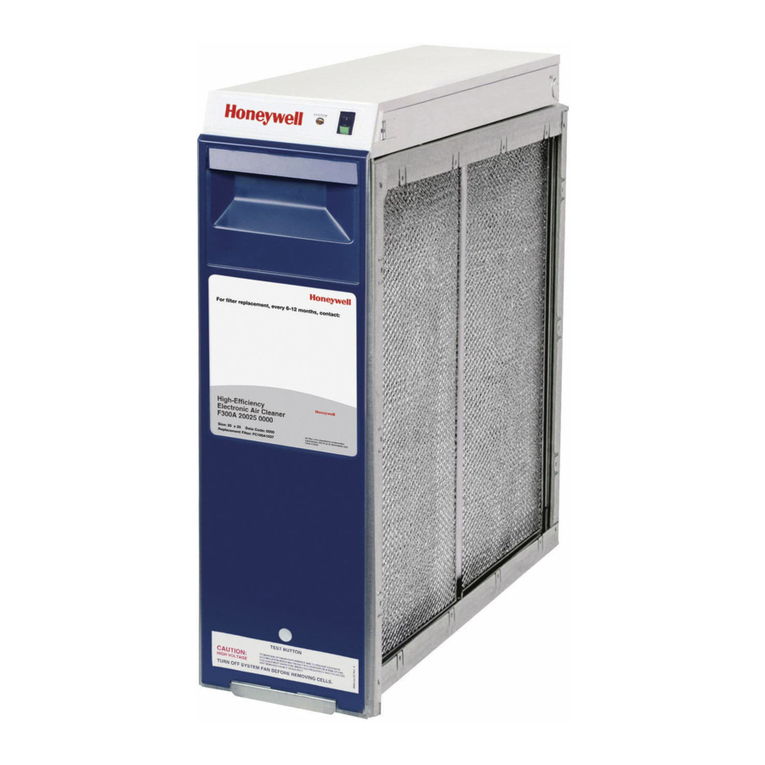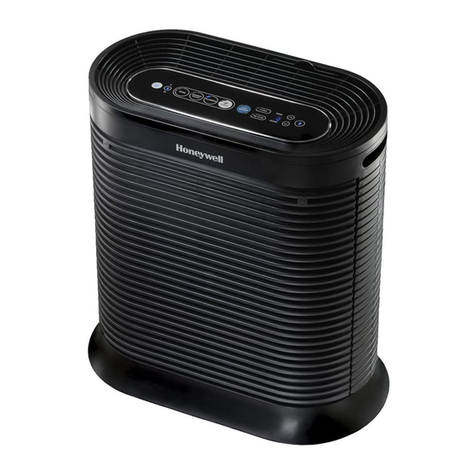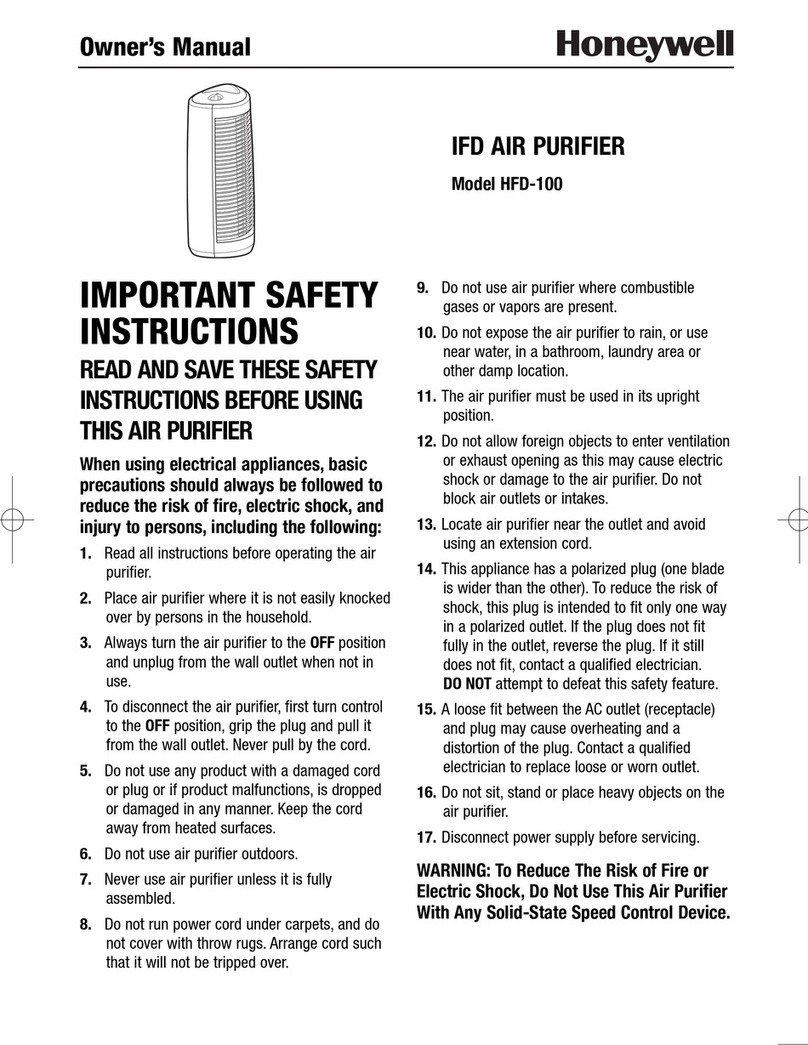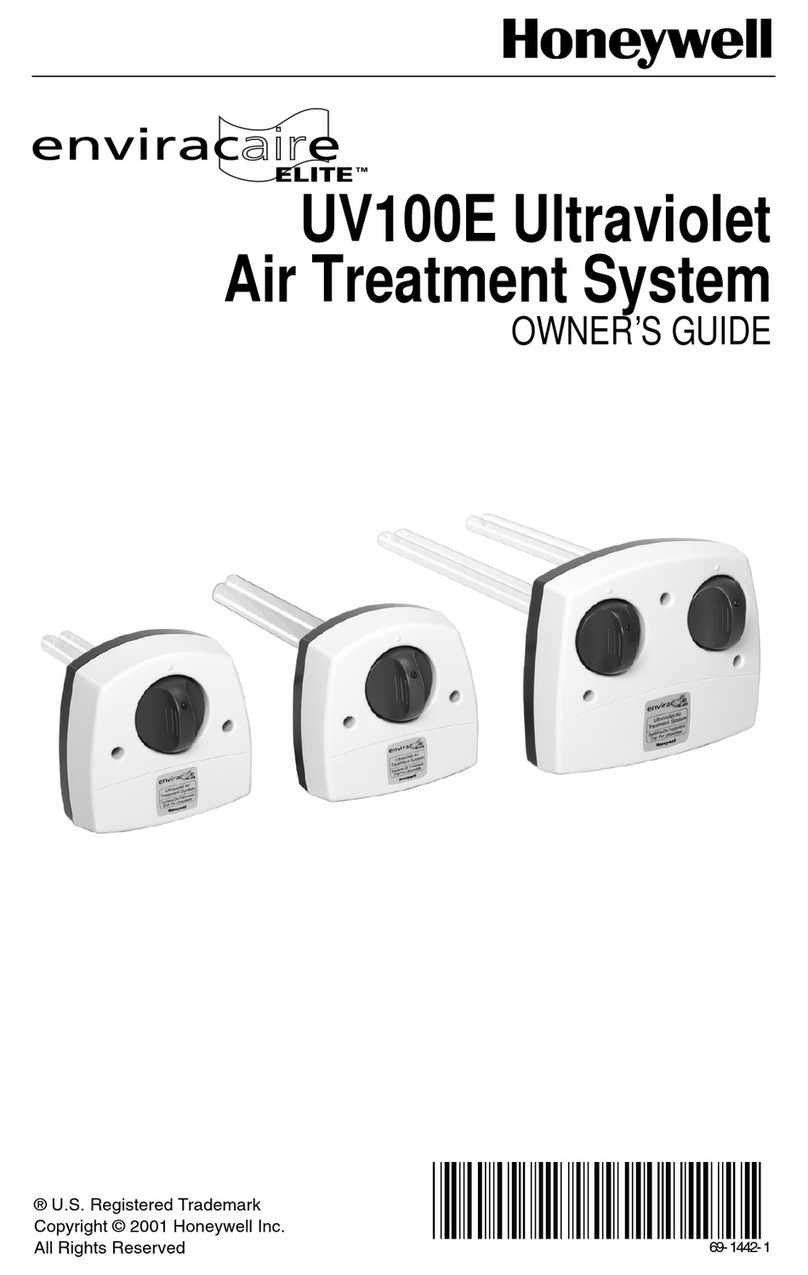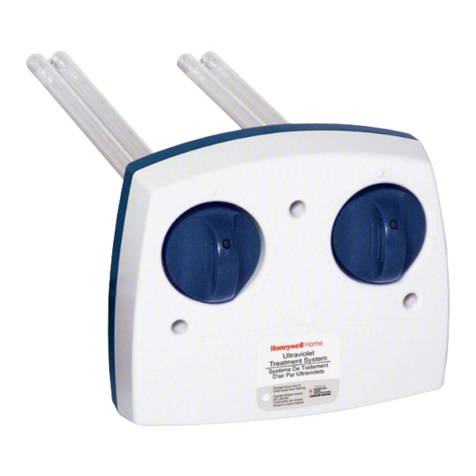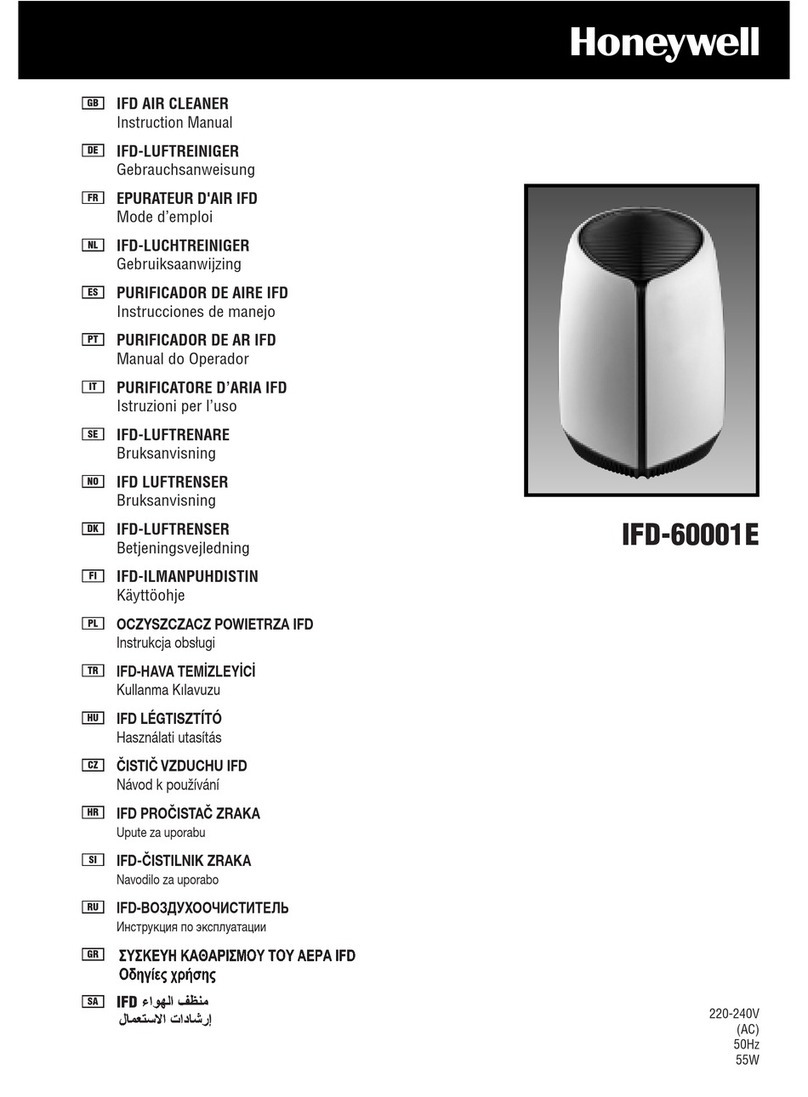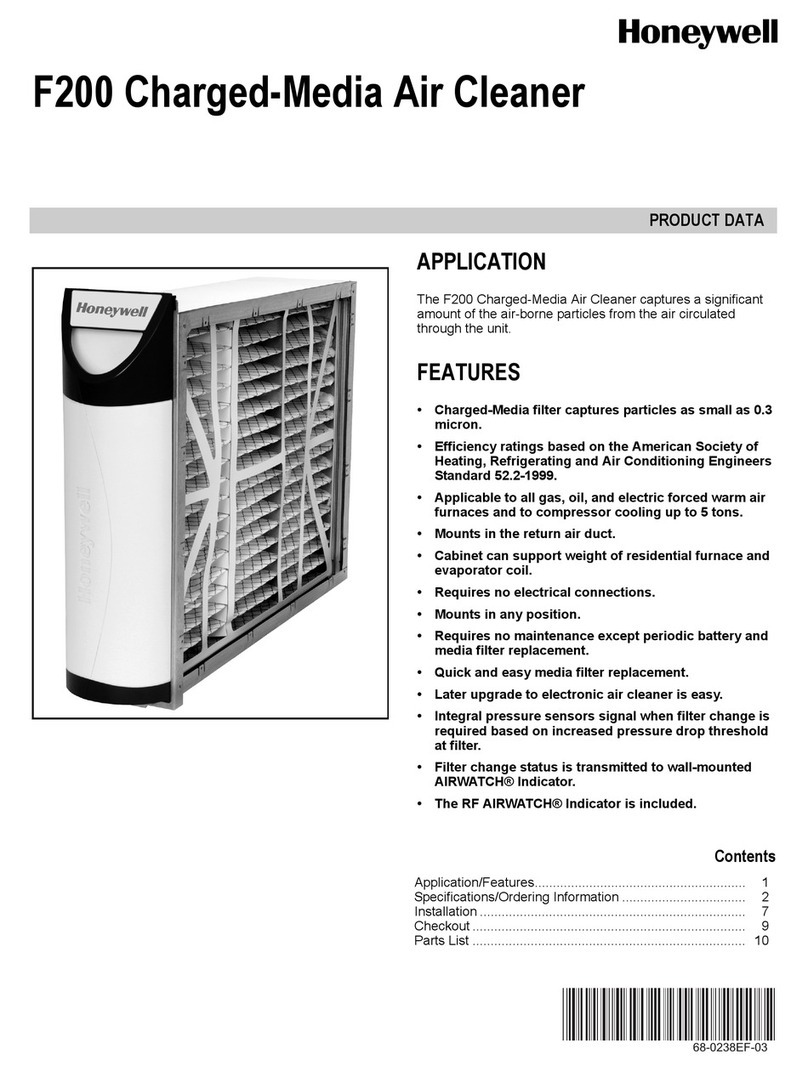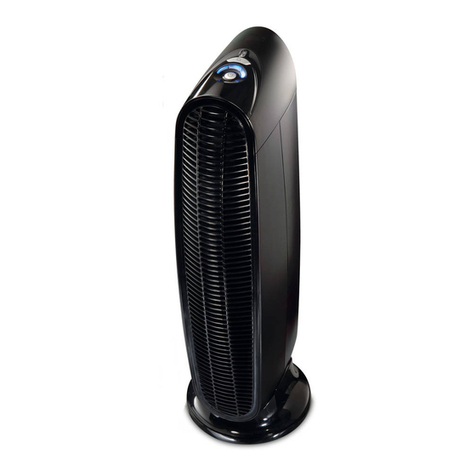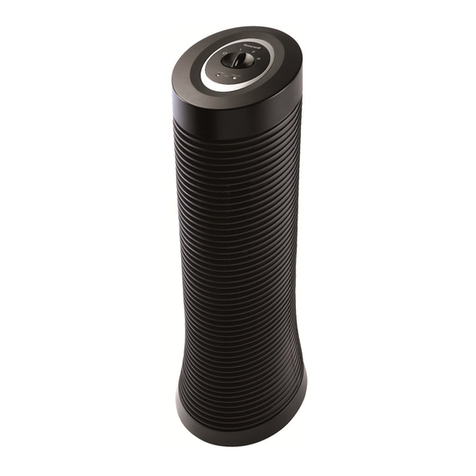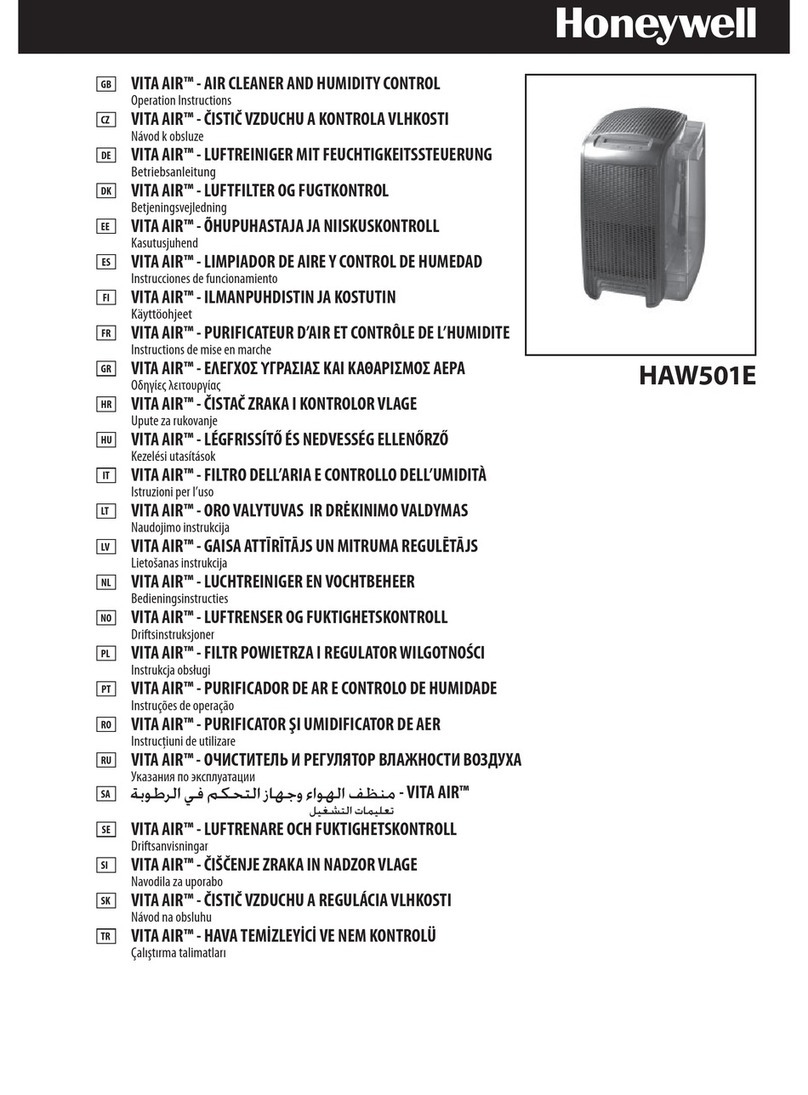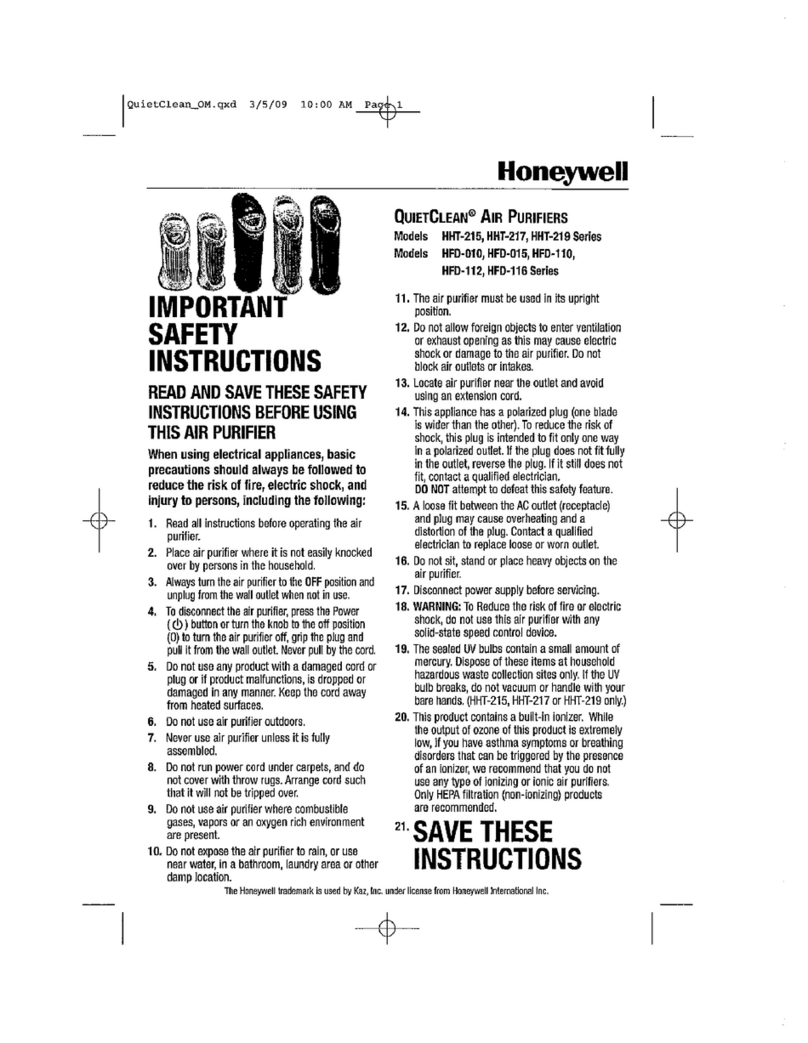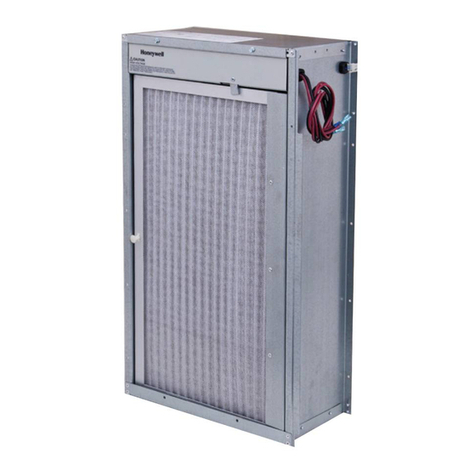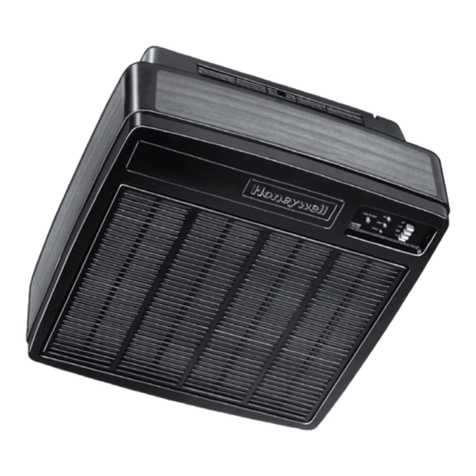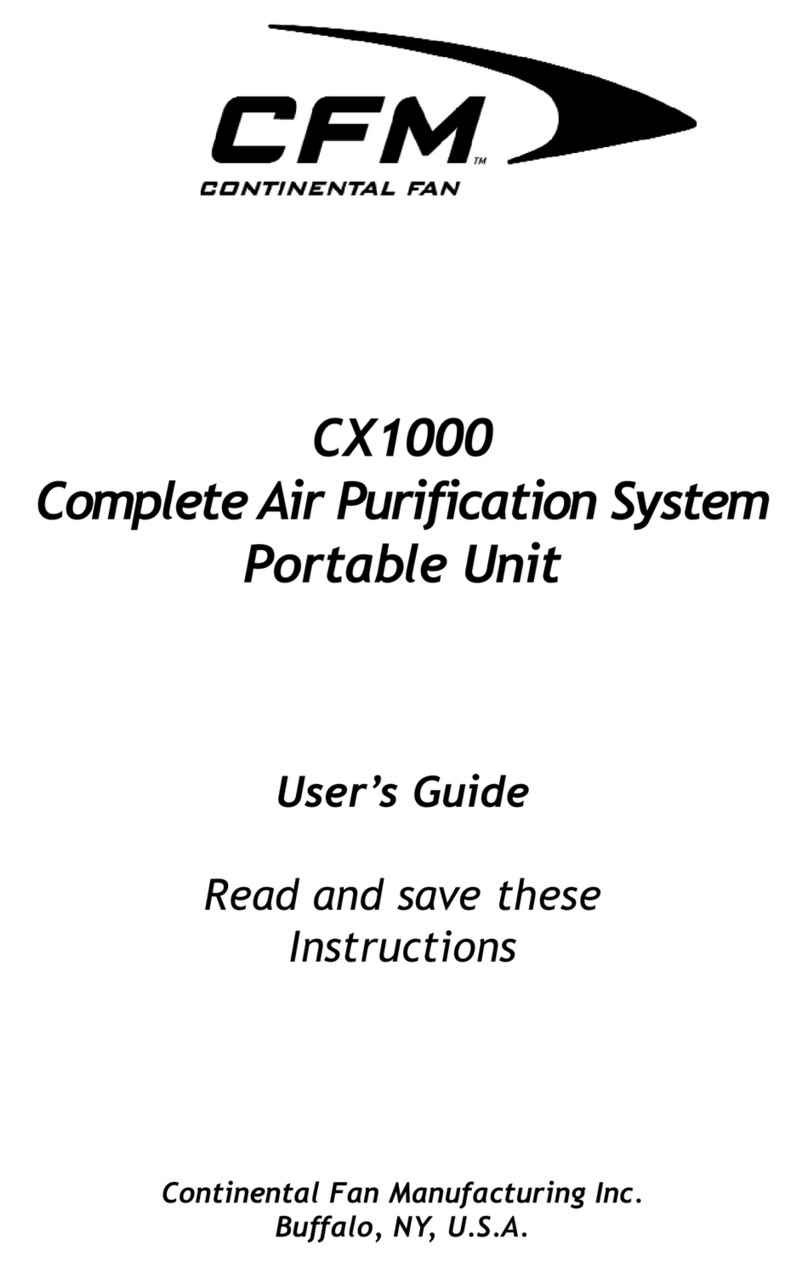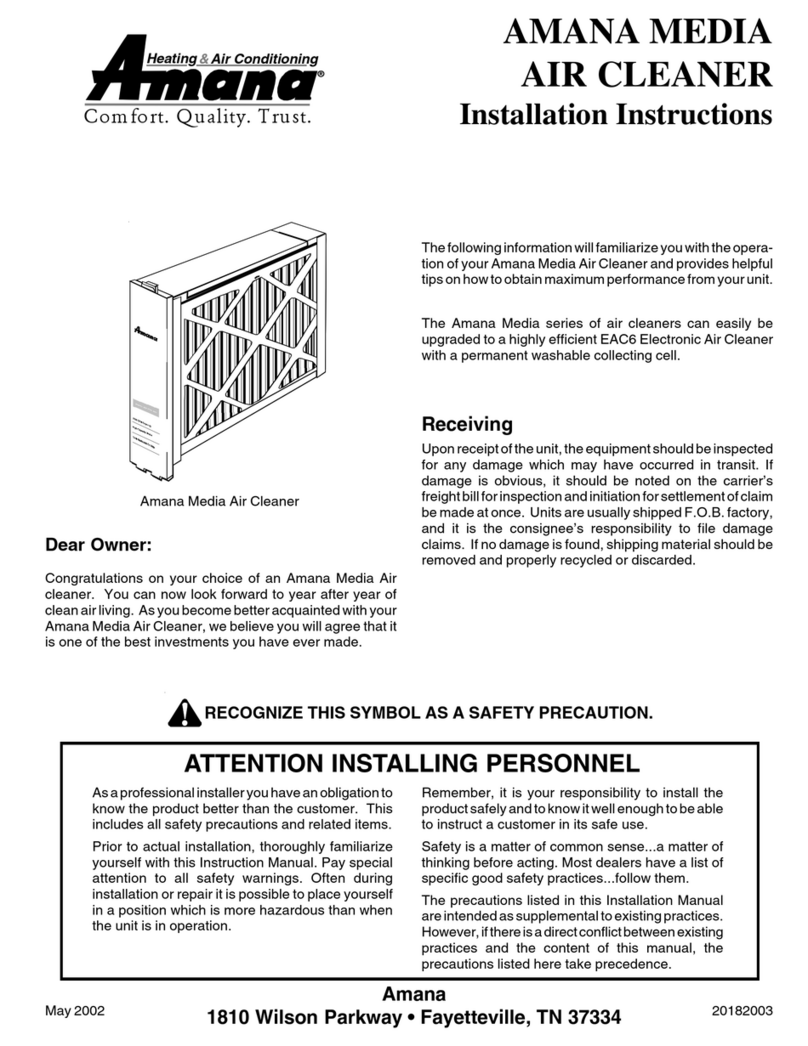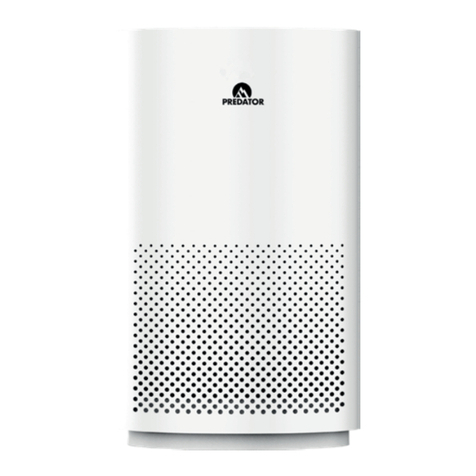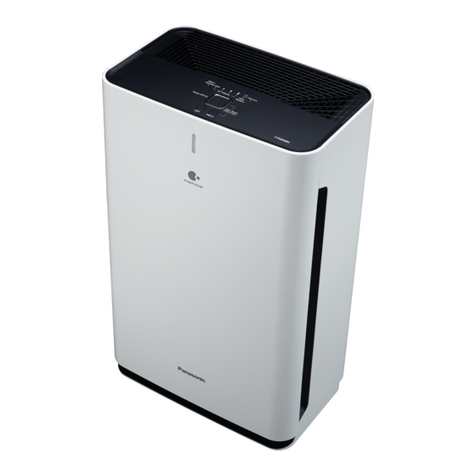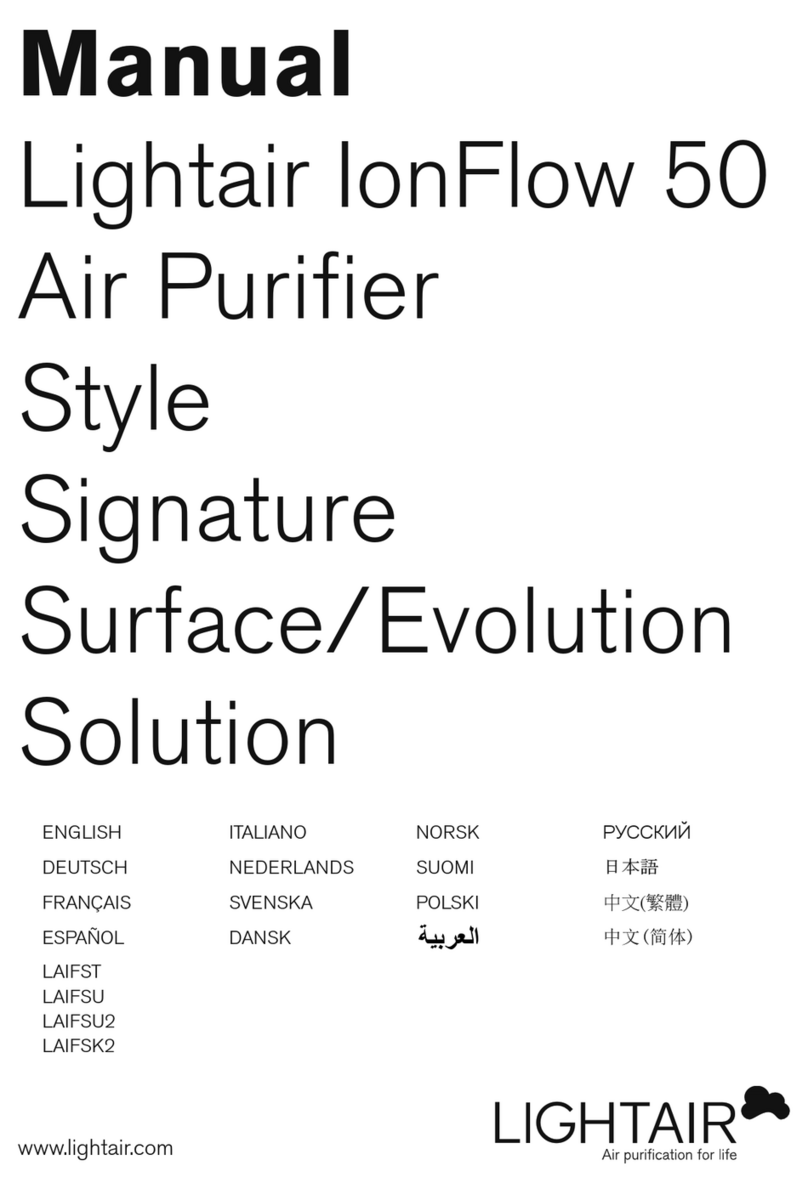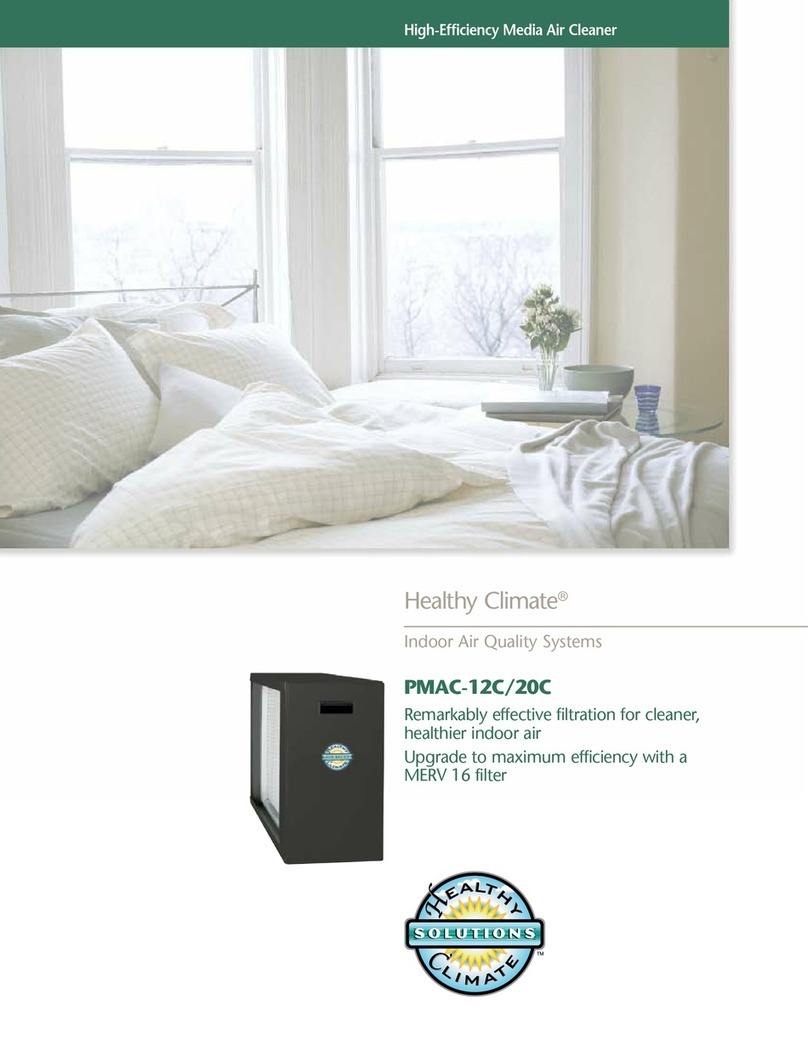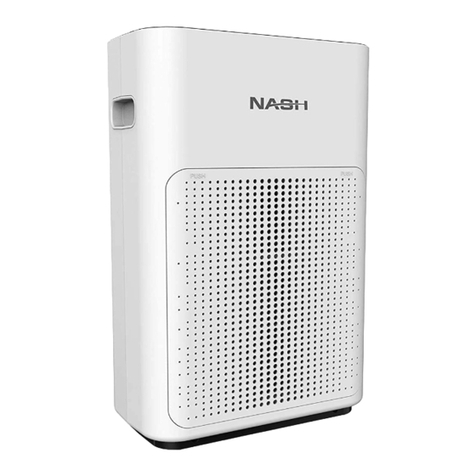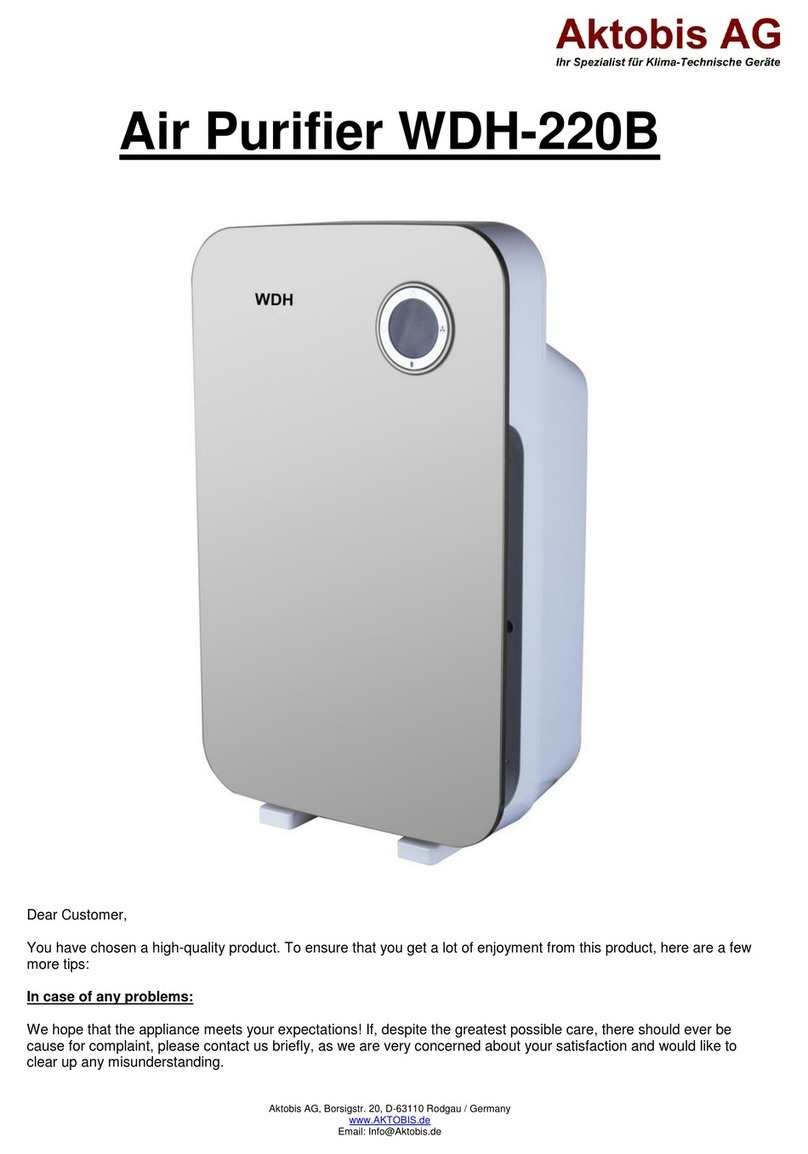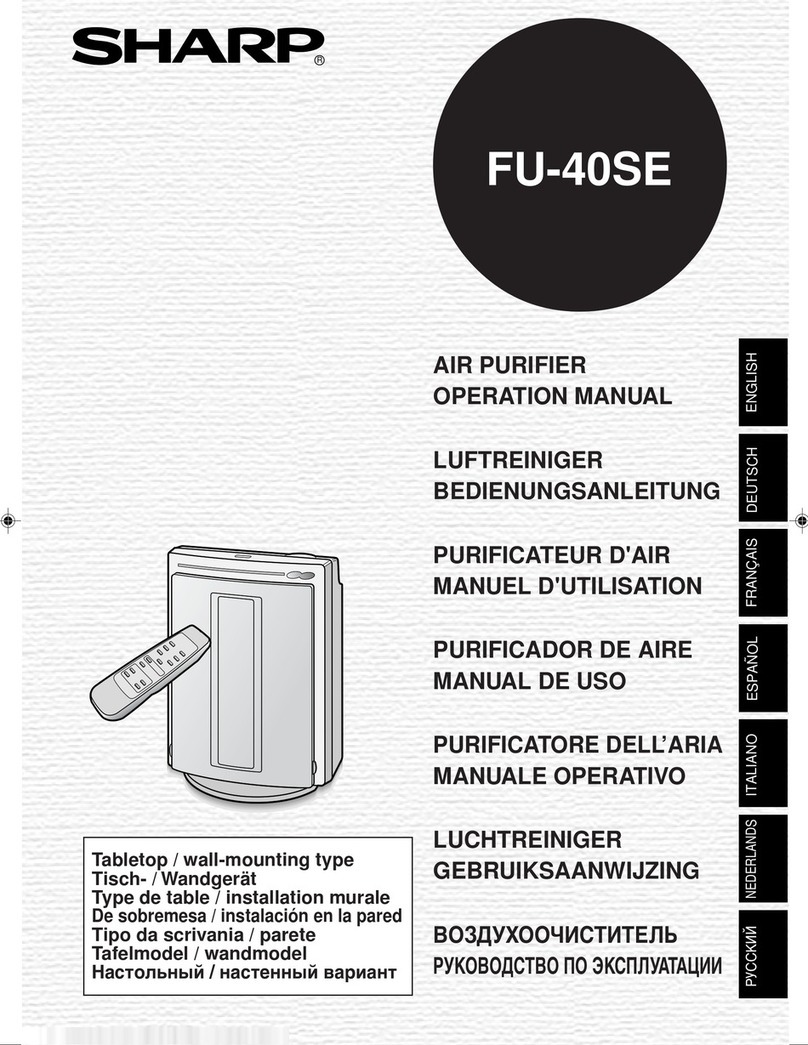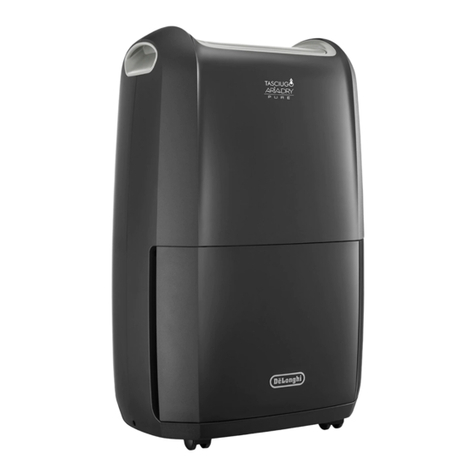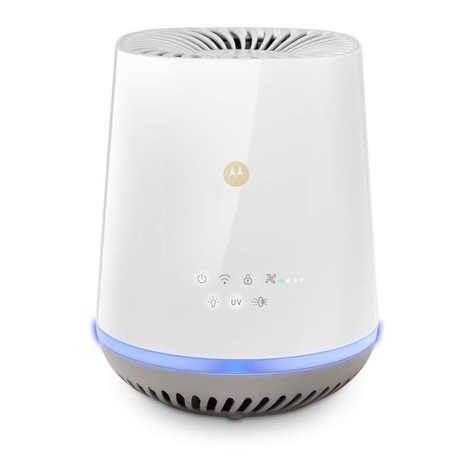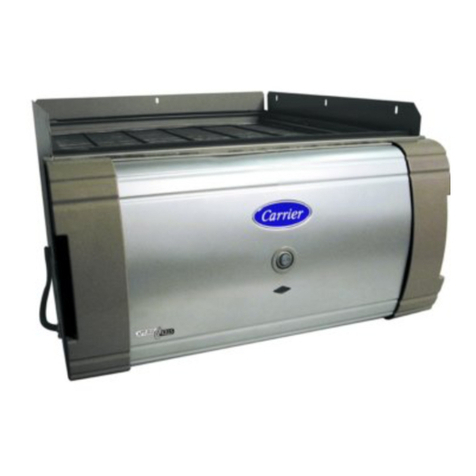
F116 SERIES 2 SELF-CONTAINED DUCTABLE COMMERCIAL AIR CLEANER
68-0200—07 6
PLANNING THE
INSTALLATION
TO REDUCE THE RISK OF FIRE,ELECTRICAL
SHOCK, OR INJURY TO PERSONS,OBSERVE THE
FOLLOWING:
1. Installation work and electrical wiring must be done
by qualified person(s) in accordance with all applica-
ble codes and standard, including fire rated con-
structions.
2. When cutting or drilling into the wall or ceiling, do
not damage electrical wiring and other hidden utili-
ties.
3. Never place a switch where it can be reached from a
tub or shower.
4. Use this unit only in the manner intended by the
manufacturer. If you have questions, contact the
manufacturer.
5. Before servicing or cleaning unit, switch power off at
service panel and lock service panel to prevent
power from being switched on accidentally.
6. If this unit is to be installed over a tub or shower, it
must be marked as appropriate for the application
and be connected to a GFCI (Ground Fault Circuit
Interrupter) - protected branch circuit.
Static Pressure / Ducting
Smooth round duct offers the least resistance (static
pressure) to airflow. Round ducting with a total inside area
of 200 square inches (approximately 16” diameter) and a
maximum straight run length of 100 feet, with
approximately 2300 CFM passing through it, develops
approximately 0.2” W.G. of static pressure.
A square or rectangular duct with 100 feet of straight
length, 240 square inches of opening ( approximately 15”
x 16”) with approximately 2300 CFM passing through it,
develops 0.2” W.G. of static pressure.
Add 0.35” W.G. pressure for each 90°elbow in the system,
and 0.05” W.G. for each change in duct diameter, slight
bend, and grill / diffuser used. Use a duct system whose
face area is equal to those mentioned. Increase the duct
face area to reduce pressure, decrease the duct face to
increase pressure.
Use of flexible ducting, corrugated ducting and duct board
will add approximately 15% to 30% additional static
pressure compared with smooth surface metal ducts
(galvanized or painted sheet metal) of equal size.
To compute round duct face area in square inches,
multiply the square of the diameter in inches by 0.7854.
Multiply the width in inches by the height in inches of a
rectangular or square duct to find its face area in square
inches.
If there is too much ducting pressure, the net air volume
will reduce from the system, thus stressing the motor and
potentially causing motor damage.
Consult with a mechanical engineer or contractor
experienced in duct design and pressure calculations for
assistance in ducting your F116 Series 2 air cleaner.
Choose Location
Choosing a location that is readily accessible for regular
inspection and cleaning. Allow enough room for removing
the prefilter and primary filters. Be sure there is room for
servicing without removing pipes, ducts, or other heating
system components. See Fig. 3 through 11 for suggested
locations.
Fig. 3. Positioning air cleaner for vapor control in
printing, brazing, soldering, or glue shops.
Fig. 4. Positioning air cleaner to remove pollutants from
a conveyor feed process such as screen printing.
TOP VIEWCURTAIN
CONVEYOR DRYER HOOD INPUT
CURTAIN
OUTPUT DRYER INPUT
SIDEVIEW
M10797
AIR CLEANER
AIR
CLEANER
